DP Giles Nuttgens gets the most out of 35mm film to capture 'Montana Story'
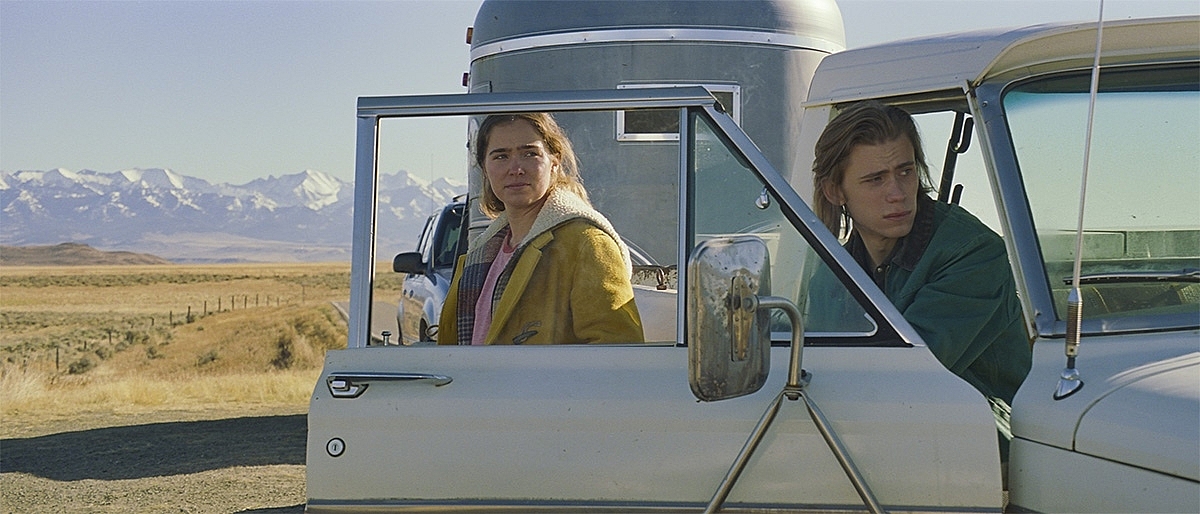
Haley Lu Ruchardson (left) and Owen Teague (right) in "Montana Story." Photo courtesy of Bleecker Street.
From the acclaimed writer/directors Scott McGehee and David Siegel (What Maisie Knew, The Deep End) comes a neo-Western with an emotional tremor hiding beneath it. Two estranged siblings (Haley Lu Richardson, Owen Teague) return home to the sprawling ranch they once knew and loved, confronting a deep and bitter family legacy against a mythic American backdrop.
Production on Montana Story was initially sidelined by COVID-19. "Once the pandemic hit everybody put everything to one side," states cinematographer Giles Nuttgens BSC who collaborated for the fourth time with McGehee and Siegel. "David and Scott were convinced if the budget was kept really low, which was around $2 million, they could make a film.
"The script [for Montana Story] was written relatively rapidly based on a previous idea that was personal to them. The pandemic informed part of the filmmaking process because the chances of getting any other film going during that period was slim. It also became part of the crewing process because it suddenly meant that people were available to do films which they wouldn't have likely had done beforehand.
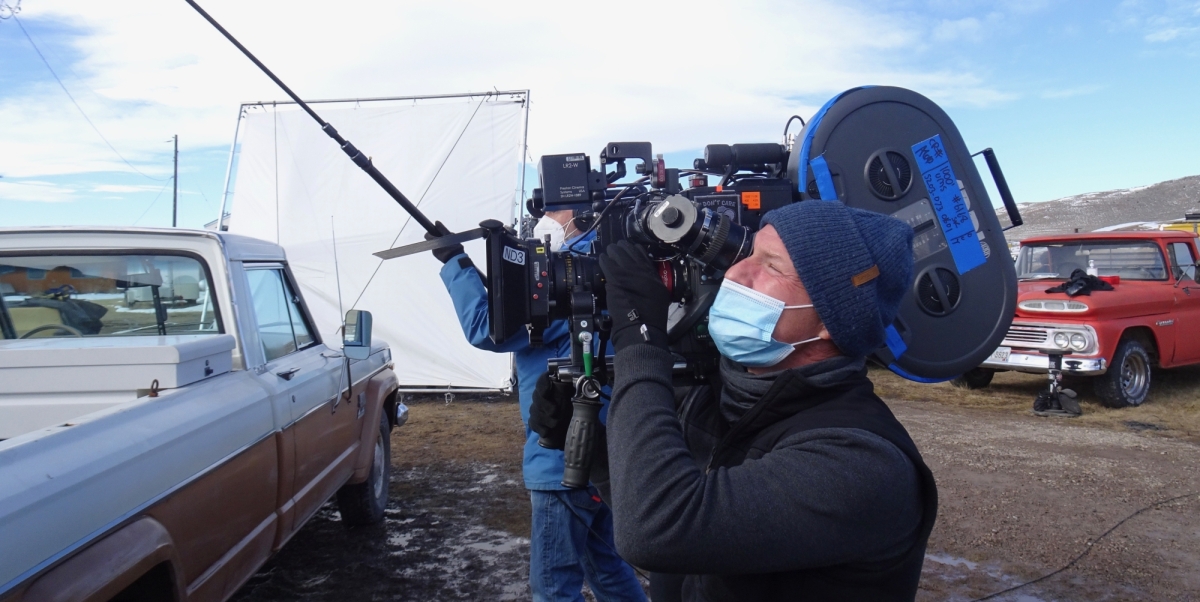
The major reason that Giles Nuttgens wanted to seek a career in the movie industry was because of his love for film. Photo courtesy of David Siegel.
"David, Scott and I know each other professionally, creatively and as friends so the process of deciding what a film should look like or how we should construct the mise-en-scène isn't something that we need to engage in at the same level as I might do with another director. Our previous experiences together helped massively in starting the project with limited preparation time due to the pandemic and the small budget."
Because of U.S. permit problems during the pandemic Nuttgens turned up just 20 days before principal photography. "The main locations were chosen with us talking on Zoom along with reference photos. By the time I had actually landed in Montana, the design work by production designer Kelly McGehee had already started. We managed to compress the whole process where the DP would have been directly involved because I had faith that what they would construct was going to work for the light as well."
There was no need for storyboards. "David and Scott rationalize exactly the placement of the camera and what story it's trying to tell. Normally, it tends to be one character's specific point of view of something else that is happening. One of the elements of their filmmaking is the precision of how people move within the frame. By controlling the positioning on the set of objects with narrative importance they can encourage the actors to move in a way that aligns with the movement they have already planned for the camera."
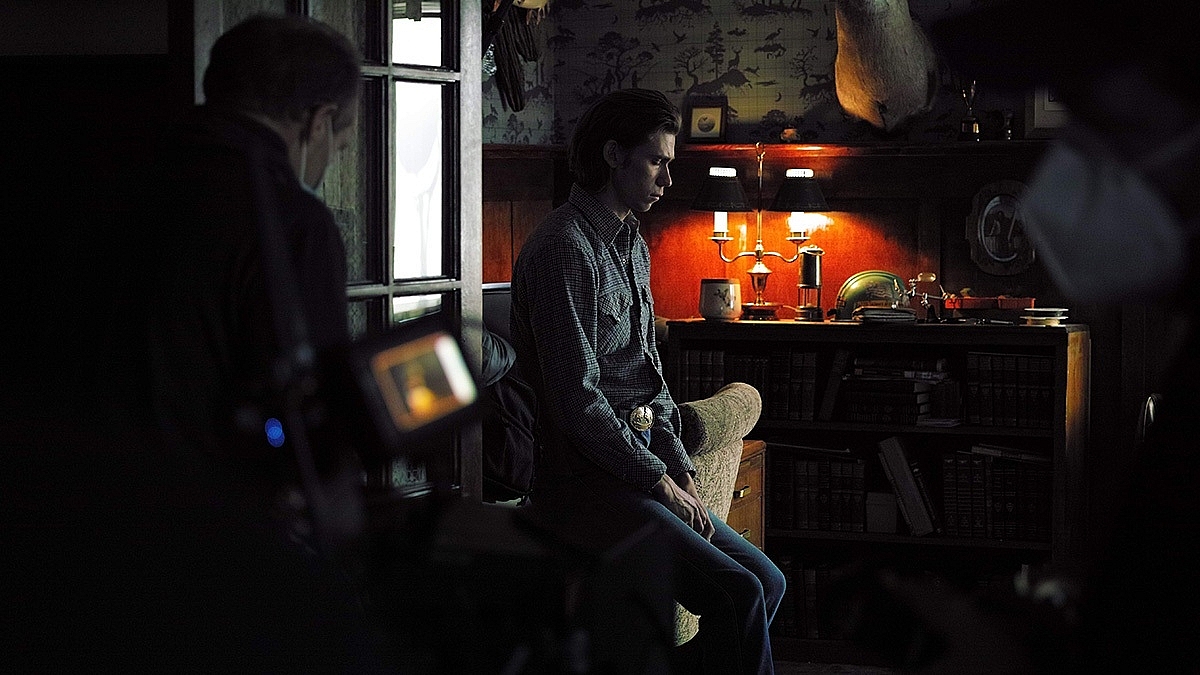
It was important to make the ranch house feel foreboding so wooden panelling was added to the interior. Photo courtesy of David Siegel.
All four films created by the trio have been captured on film. "The reason why I came into the industry was for film," reveals Nuttgens. "A film camera to me was like a sewing machine; it was mechanical. I enjoy mechanics and would have been a car mechanic if I hadn't done this. The challenge of working with the photochemical process also stimulated me. I started shooting documentaries and 16mm was the only thing that was portable enough to go and do that at the time. I also always loved the way that film actually looked on the big screen.”
There were practical reasons for shooting on film for Montana Story. "It was appealing to shoot on film for a lot of the people who came and joined us," states Nuttgens. "We had a very young crew. A number of them had never shot on film and they felt excited about that. Apart from David, Scott and myself really loving the look of 35mm on projection, one huge reason for shooting on film was the amazing exposure latitude in the highlights. We had chosen a location that had a lot of windows and being able to read what was outside was as important as what was inside."
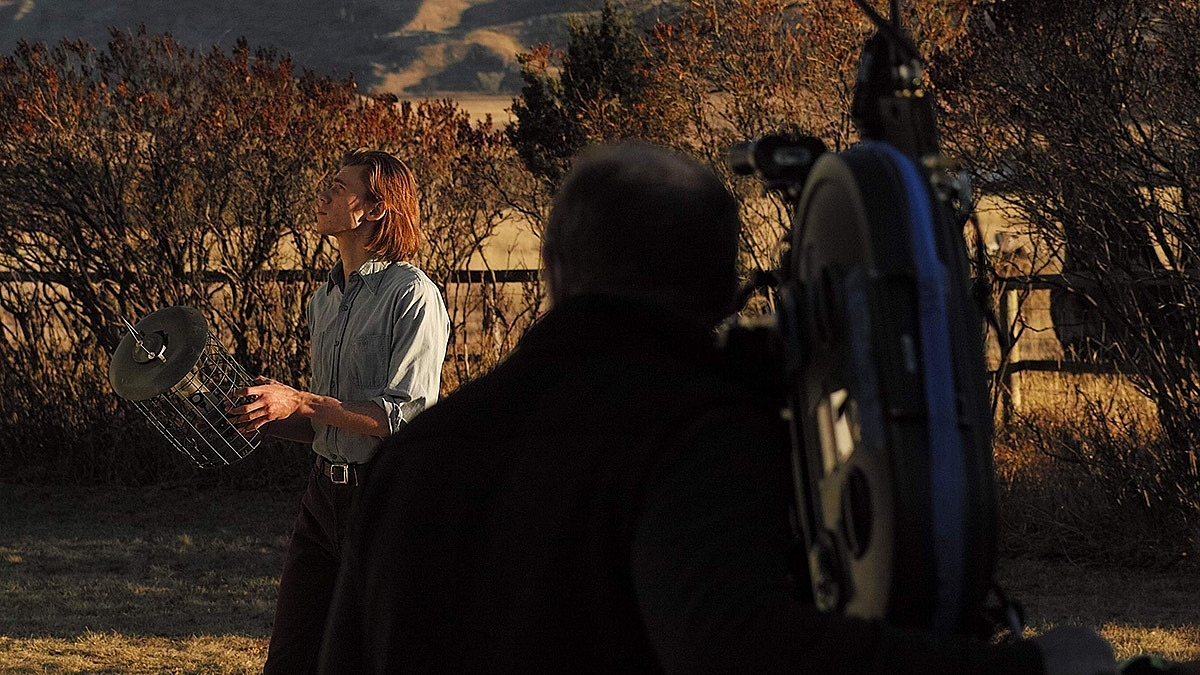
The footage was shot with a single Arricam Lite camera. Photo courtesy of David Siegel.
The core theme revolves around relationship between the father and the two children. "But we also wanted to be clear that the environment was critical in understanding the effect the isolation of a small ranch out in Montana [has] to the family and their relationships with one another. We also saw this domestic drama as a bit of a Western and wanted to have a timeless feel to it. You can shoot anamorphic on digital and get the image looking close to film in the DI, but there is definitely a notable difference specifically on the exteriors to the texture and tone of the 50D stock that we were using that would be hard to mimic. It was something which the critics really noted that made it feel like an old fashioned-western, that it became timeless in its setting. Montana Story is happening in the present, but the underlying narrative is in the past."
This was the first color picture that Nuttgens did not have access to the film stocks that he had grown accustomed to using in the past. "That created an interesting challenge for me. I decided to use the slow daylight stock outside and the choices for the interior for us were 250D or 500T. I made the decision without testing, though I had asked around a bit and done my research, that the stock I would use for the main bulk of the daylight interiors was 250D. One of the reasons for that is the exposure latitude at the top end [in the highlights] seemed to be greater than the 500T, and it flattened off in a way that allowed me to maintain the presence of the mountains through the windows. Glass doors were built in between the study and the main rooms so we could angle the doors to reflect the mountains in them. We wanted to always feel the presence of the harsh beauty of the environment around them as it, in part, drove the emotions between the three people in this house in an isolated area in Montana."
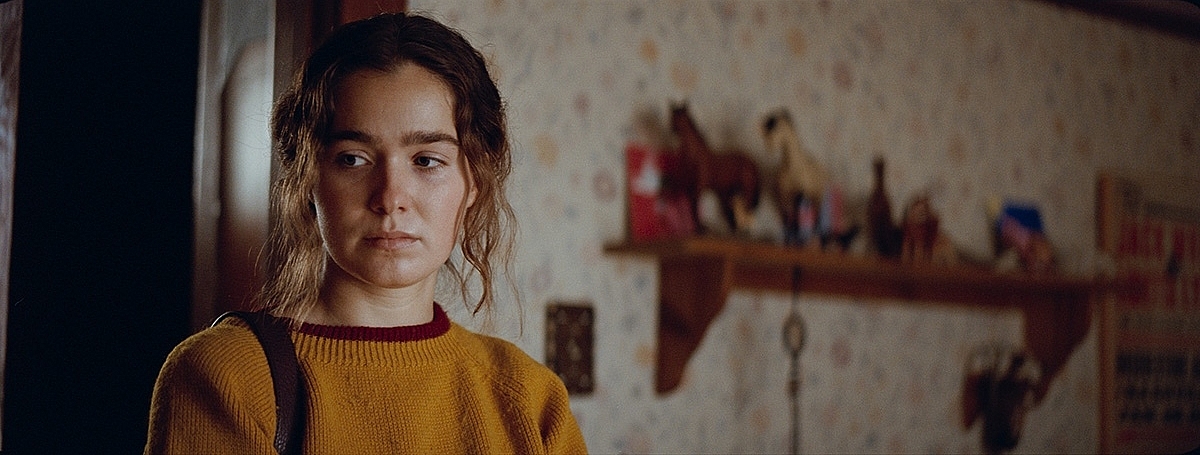
Haley Lu Ruchardson in "Montana Story." Photo courtesy of Bleecker Street.
There was some discussion around how the KODAK VISION3 250D Color Negative Film would handle the black skin of Ace [Gilbert Owuor], the nurse looking after the comatose patriarch. "Sometimes daylight kicks on black skin tend to feel blue because the colors are slightly more neutral on the daylight stock compared to tungsten stocks. Whereas at night Ace looked fantastic on 500T."
Four to five people made up the grip and electric departments while the camera department consisted of a first camera assistant, second camera assistant and a loader. Key crew members were first AC Tony Coan, key grip Michael Jezak and gaffer Eric Mosley. "Our main shooting crew with the actors was 12 people, and that was also one of the practical reasons we wanted to shoot on film," notes Nuttgens. "We were liberated from modern technology and had one monitor for the directors, and we shot very fast with a single Arricam Lite camera. It was 24 10-hour days straight. A massive factor was that everyone wanted to do this picture because it was on 35mm."
Despite printer lights no longer being used Nuttgens still mentally works out the average exposure. "On this particular film I was quite down the line with my exposure when it came to making sure that I maintained all of the detail both in the shadows and in the highlights." The widest lens carried was a 35mm Zeiss Master Anamorphic. "David, Scott and I have always worked relatively tight and used to call the 75mm the 'happy lens' as it was the one that we used the most regularly. However, on this film we worked a bit wider between a 50mm, 60mm and 75mm. Ultimately, we are doing portrait photography, and on the exteriors, we wanted to see enough of the background without it being too out of focus. Our zoom lens was an Angenieux Optimo 56-152mm. When doing handheld, I used that combined with a 1,000 ft magazine and it gave me a perfect balance with the camera."
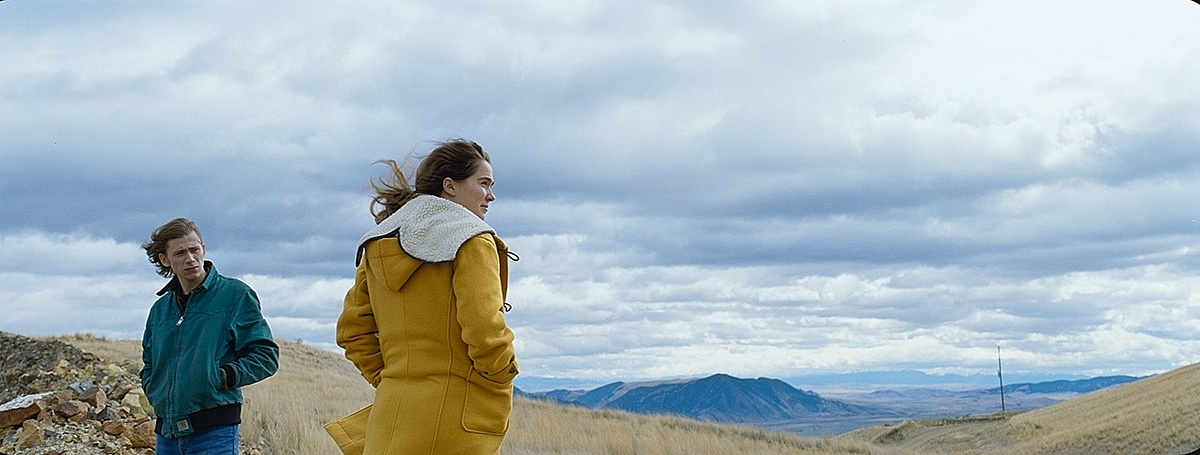
The landscape was treated as character is always looming in the background. Photo courtesy of David Siegel.
In the past a reasonable amount of light was needed for most anamorphic lenses. "I generally aimed to work at T4 because the lenses were not great when wide shooting open," remarks Nuttgens. "The Zeiss Master Anamorphics are T1.9 which is extremely fast for anamorphic lenses. I tend to use the edges of the frame so it's no good having a lens whose sharpness drops off either left or right or towards the top or bottom of the frame. The Master Anamorphics even wide open are pretty sharp right to the edges of the frame. For me, that's a massive release. The complication with that is that the focus puller, the first AC, has very little depth of field to work with. In the daylight interiors, I would try to work to T4 which generally wasn't a problem using the 250D. As the light died towards the end of the day it was useful having lenses that would work wider open but made it more difficult for Tony, the first AC. However, his natural skill combined with the use of a range finder focus assist gave me the freedom to work at night at T2.5 and sometimes even wide open. The Master Anamorphics are sharp, and we were able to keep them sharp."
There is a long scene at night where all of the lights go off due to a power cut in a huge storm. "A reasonable amount of dialogue happened in this 'unlit' state until one of the characters lights a candle," states Nuttgens. "I judged the exposure levels through the camera viewfinder to decide where it was going to fall off the negative; my light meter wasn't capable of reading such low light levels. There was just enough information to carry the story except for one little section where someone had a line of dialogue and was pretty much a silhouette. We had one 6K HMI and I wanted a hard light coming through the window of the study to create the rain effect as if it was from moonlight but didn't want it overly blue. However, I couldn't get the light far enough away because we didn't have any stands [that] would take it high enough up, and we would have ended up with almost horizontal moonlight. Both Ace and Erin had their backs to the window, and therefore to the light source, and their skin tones were extremely different, Ace's very dark and Erin's very light. Trying to find right the balance of 'invisible' fill light for the two of them [created by a Lite Mat] was a challenge. I probably ended up going more 'Hollywood night' than I would have done on digital or in different circumstances where I had more flexibility with the type of light that I had."
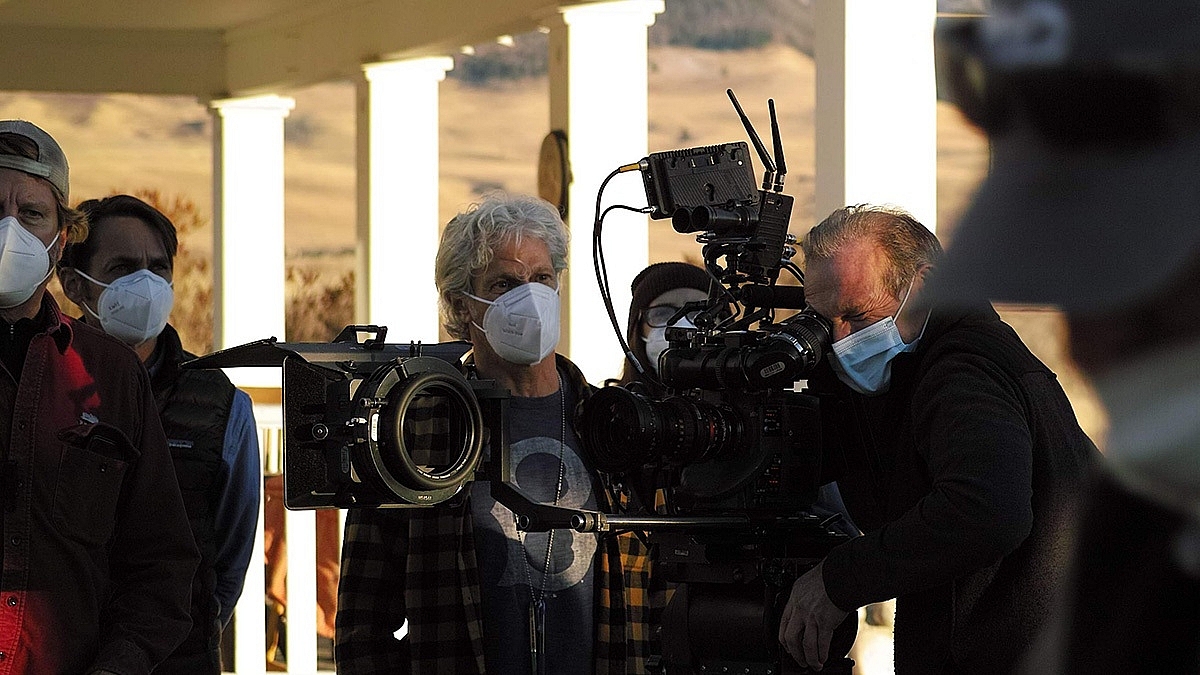
All four movies made by David Siegel, Scott McGehee and Giles Nuttgens have been shot on film. Photo courtesy of David Siegel.
Each film stock has its own color space. "I didn't want a warm picture," explains Nuttgens. "The weather didn't oppose that, and we had essentially cold winter light. I thought that would be embraced by the daylight stocks which tend in this direction. The color palette itself was mainly dictated by wall colors and costumes. We put wooden paneling in most of the house. The kitchen was a slight reddish-brown color. There were certain yellows that I tried to avoid because they get too close to skin tones. For that reason, my lighting was fairly clean because there were enough brown tones in there already." Going for a romantic look for the house would have been a mistake. "Even though the house is incredibly beautiful it definitely had to feel like a harsh environment. In some ways that was the other motivation in the decision to use the daylight stock. The 500T looks fantastic when its warm and looks fantastic at night with candlelight. Its reproduction of skin tones is beautiful. That wasn't necessarily what I wanted all the way through the film. The mid-range daylight stock that we used on most of the daylight interiors was the right way to go for the film and that type of environment."